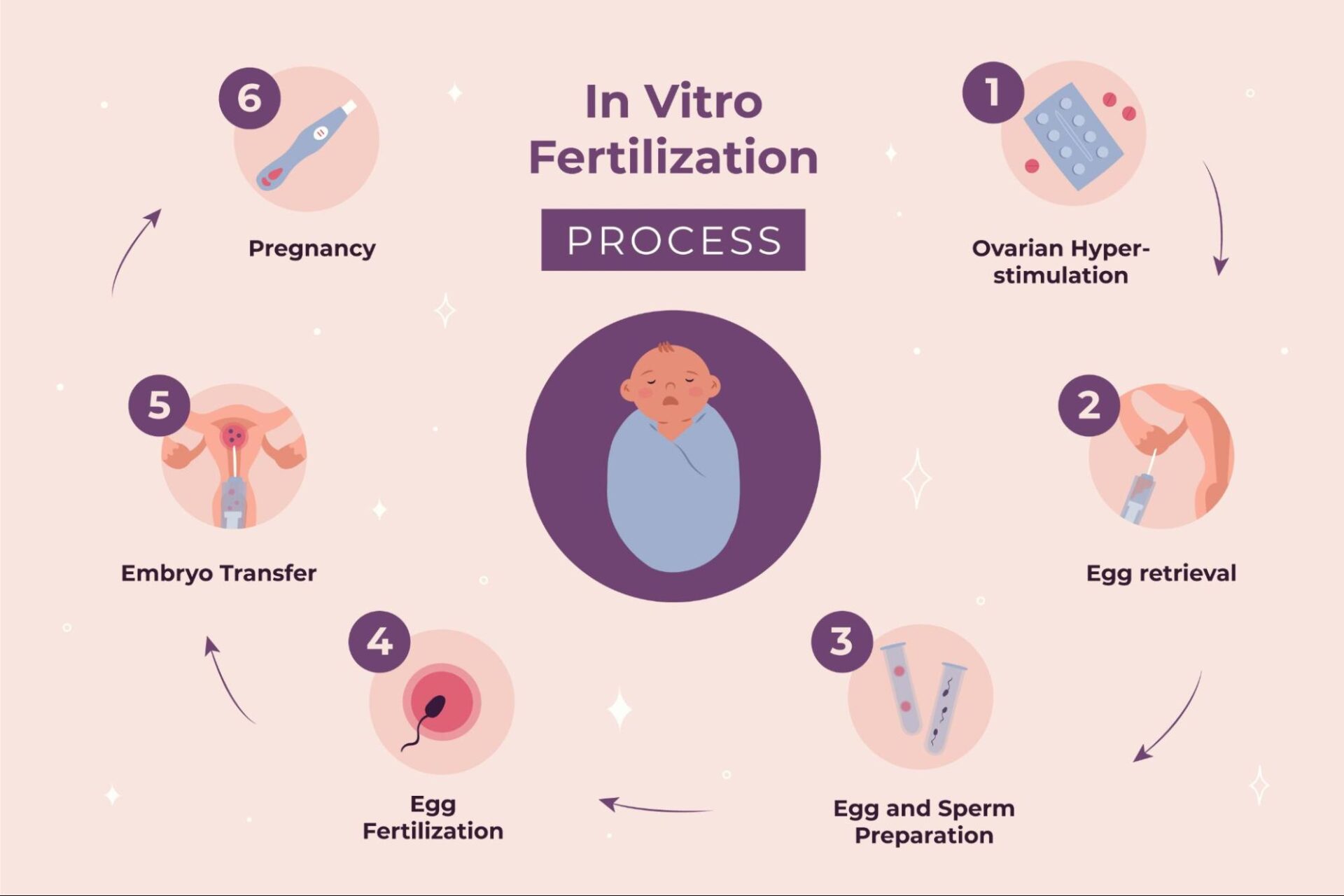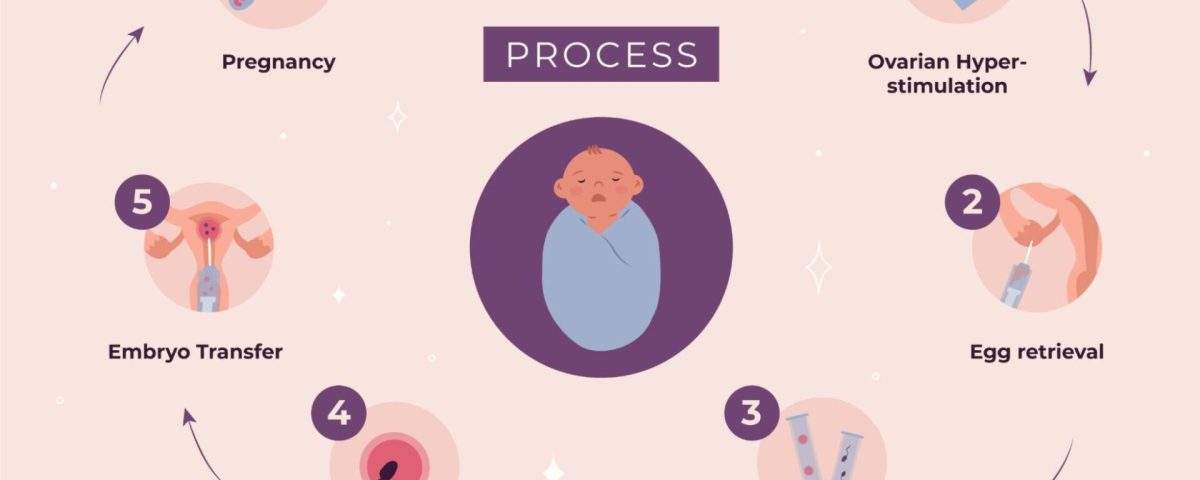
IVF Shots: Everything You Need to Know About This Key Step in Your Fertility Journey
April 4, 2025Trump’s Free IVF Promise: What It Means, Why It Matters, and What You Need to Know
Donald Trump’s promise to make in vitro fertilization (IVF) free for all Americans has sparked curiosity, excitement, and plenty of questions. Whether you’re a fan of his bold ideas or just someone trying to figure out how this could affect your life, this topic is worth digging into. IVF is a big deal for millions of families, and Trump’s plan could shake things up in ways most people haven’t even thought about yet. So, let’s break it down—piece by piece—and explore what’s behind this headline-grabbing idea, how it could work, and what it reveals about the man himself.
In this article, we’ll go beyond the surface. You’ll get the scoop on Trump’s personal quirks that tie into this promise, the nitty-gritty of IVF costs and access, and some fresh angles that haven’t been fully explored elsewhere. Plus, we’ll toss in practical tips, the latest research, and a few surprises along the way. Ready? Let’s dive in!
What Is Trump’s Free IVF Plan All About?
Donald Trump dropped a bombshell during his 2024 campaign when he said, “Under the Trump administration, your government will pay for—or your insurance company will be mandated to pay for—all costs associated with IVF treatment.” He didn’t stop there, adding, “Because we want more babies, to put it nicely.” This wasn’t just a random comment—it’s a pledge that’s got people talking, from hopeful parents to policy wonks.
The Core Idea
At its heart, Trump’s plan is about making IVF—a fertility treatment that helps people have babies when natural conception isn’t working—free for anyone who needs it. Right now, IVF can cost $15,000 to $30,000 per try, and many folks need multiple rounds. Trump’s saying either the government will foot the bill or insurance companies will be forced to cover it. No more digging into savings or skipping the dream of a family because of money.
Why It’s a Big Deal
IVF isn’t cheap, and it’s not always covered by insurance. Only about 1 in 4 big companies offer it as a benefit, and Medicaid rarely touches it. Trump’s promise could open the door for millions of Americans who’ve been priced out. Imagine a young couple in Ohio or a single mom in Texas suddenly having a shot at parenthood—pretty life-changing, right?
A Peek at Trump’s Personality
Here’s something you might not know: Trump’s a family guy at his core. He’s got five kids and loves talking about them—especially his grandkids. At rallies, he’s been known to go off-script, bragging about how smart they are or how they call him “Grandpa.” This “more babies” line? It’s not just politics—it’s personal. He’s said before he thinks America needs more kids to stay strong, and this IVF idea fits that vibe perfectly.
Why Did Trump Pick IVF? The Hidden Story
Lots of folks wonder: why IVF? Why not free college or cheaper gas? To get the full picture, let’s look at what’s driving this—both the obvious stuff and some behind-the-scenes tidbits.
The Political Angle
Trump’s no stranger to bold promises, but this one’s got strategy written all over it. After the Supreme Court overturned Roe v. Wade in 2022 (thanks to justices he appointed), reproductive rights became a hot-button issue. Democrats have been hammering him, saying his policies hurt women’s choices—including access to IVF. By pushing free IVF, he’s flipping the script, trying to show he’s pro-family in a way that appeals to suburban moms and swing voters.
A Personal Passion?
Dig a little deeper, and you’ll find Trump’s got a soft spot for big families. He’s joked about wanting a “Trump dynasty” and once told a crowd in Michigan, “We need great children, beautiful children in our country.” It’s not just talk—he’s been spotted at Mar-a-Lago playing with his grandkids, teaching them golf tricks. Insiders say he lights up around kids in a way he doesn’t with policy briefs. This IVF pledge might be his way of leaving a legacy that’s about life, not just laws.
The Timing Clue
Here’s a fun fact: Trump first floated this idea in August 2024, right after an Alabama court ruled frozen embryos were “children.” That decision freaked out a lot of people, pausing IVF services in the state. Trump jumped in fast, saying he “strongly supports” IVF and urging Alabama to fix it. It’s like he saw a chance to grab a win—and he ran with it.
How Could Free IVF Actually Work?
Okay, so Trump wants IVF to be free. But how do you turn a campaign promise into reality? Let’s break it down into bite-sized pieces and see what’s possible.
Option 1: Government Pays
If the government covers IVF, it’d be like Medicare for fertility. The feds would set up a program, pay clinics directly, and families wouldn’t see a bill. Sounds great, right? But here’s the catch: it’s expensive. A single IVF cycle costs around $20,000 on average, and in 2022, over 90,000 babies were born via IVF. That’s billions of dollars a year. Trump’s team hasn’t said where the money would come from—taxes? Cuts elsewhere? It’s a big question mark.
Option 2: Insurance Mandate
The other idea is forcing insurance companies to cover IVF. Some states (like Illinois) already do this, but it’s not nationwide. Trump could push Congress to pass a law or tweak the Affordable Care Act to include IVF as a “must-have” benefit. Problem is, insurance folks might raise premiums to offset the cost, and Trump’s not exactly a fan of the ACA—he tried to kill it last time he was in office.
What Experts Say
Dr. Alina Salganicoff, a women’s health expert at KFF, once noted, “The president can’t do this alone. You need Congress to fund it or change insurance rules.” She’s right—Trump would need lawmakers on board, and that’s tricky with a divided government. Plus, some Republicans aren’t thrilled about “free stuff” ideas, even from their own guy.
A Step-by-Step Look
Here’s how it might roll out if Trump gets his way:
- Policy Pitch: Trump signs an executive order (like he did in February 2025) asking for ideas to cut IVF costs.
- Congress Acts: Lawmakers debate a bill—maybe in 2026—to fund it or mandate coverage.
- ** Clinics Adjust**: Fertility centers gear up for more patients, hiring extra staff.
- You Benefit: By 2027, you could walk into a clinic and pay nothing out of pocket.
The Real Cost of IVF: Numbers You Didn’t Know
IVF isn’t just a medical process—it’s a wallet-buster. Let’s peel back the curtain on what it really costs and why Trump’s plan could be a game-changer.
Breaking Down the Price Tag
A single IVF cycle isn’t one flat fee—it’s a bunch of little ones that add up. Here’s a quick rundown:
- Medications: $3,000–$5,000 to kickstart egg production.
- Egg Retrieval: $10,000–$15,000 for the procedure itself.
- Lab Work: $3,000–$5,000 to fertilize eggs and grow embryos.
- Embryo Transfer: $3,000–$5,000 to put them back in.
- Extras: Think genetic testing ($2,000) or freezing embryos ($1,000/year).
Total? Anywhere from $15,000 to $30,000—and that’s if it works the first time. Most people need 2–3 tries, so you’re looking at $60,000 or more.
The Hidden Costs
Money’s not the only hit. There’s time off work, travel to clinics (some states only have a few), and the emotional toll. Studies show 1 in 3 IVF patients deal with anxiety or depression during the process. Free IVF could ease the cash crunch, but the rest? Still tough.
Who’s Paying Now?
Right now, it’s mostly you. Only 21 states have laws making some insurers cover fertility treatments, and even then, it’s spotty. A 2024 survey found just 25% of big employers offer IVF benefits. Trump’s plan could flip that upside down.

Trump’s IVF Promise vs. Reality: What’s Been Done So Far?
Trump didn’t just talk about free IVF—he took a first step. In February 2025, he signed an executive order to “expand access” and “reduce costs” for IVF. But does it live up to the hype? Let’s check it out.
The Executive Order Scoop
Signed at Mar-a-Lago, the order tells his team to come up with “policy recommendations” by May 19, 2025. It’s not free IVF yet—just a plan to plan. Trump said, “I think the women and families are very appreciative of it,” but there’s no cash or coverage locked in.
How It Stacks Up
During the campaign, Trump promised “all costs” covered. This order? It’s more like a homework assignment for his staff. It’s a start, but it’s not the finish line. Critics—like Senator Tammy Duckworth—say it’s “not enough” without a law forcing insurance to step up.
What’s Next?
The real test comes in 90 days when those recommendations drop. Will they push for full funding? A mandate? Something else? Stay tuned—2025 could be a wild ride for IVF fans.
The Science Behind IVF: What You’re Really Signing Up For
IVF sounds simple—mix egg and sperm, make a baby. But there’s a lot more to it. Let’s unpack the process so you know what Trump’s promise could mean for you.
How IVF Works
Here’s the basic rundown:
- Stimulation: Meds boost your ovaries to pump out multiple eggs.
- Retrieval: Doctors grab those eggs with a needle (yep, it’s a bit ouchy).
- Fertilization: Sperm meets egg in a lab dish—high-tech romance!
- Growth: Embryos chill for 5–6 days, growing strong.
- Transfer: One (or two) gets placed in the uterus—fingers crossed!
Success rate? About 40% for women under 35, dropping as you age, per the CDC.
The Latest Research
A 2023 study from the Journal of Fertility found using AI to pick the best embryos boosts success by 15%. Another gem: freezing eggs early (like in your 20s) can double your odds later. Trump’s plan could make these upgrades standard—not just for the rich.
Risks to Know
- ✔️ Pros: You get a shot at a baby when nature says no.
- ❌ Cons: Multiple births (twins!) happen in 1 in 5 cases, and there’s a slight risk of ovarian overstimulation.
Who Wins With Free IVF? The Surprising Beneficiaries
Trump’s talking “more babies,” but who’s really getting a boost here? Let’s spotlight some groups that could see big changes.
Everyday Families
Think about a 30-something couple in Georgia, scraping by on $50,000 a year. IVF’s a pipe dream now—$20,000 is half their income. Free access could turn “maybe someday” into “let’s do this.”
Single Parents and LGBTQ+ Folks
Single women and same-sex couples often face extra hurdles—higher costs for donors or surrogates, plus legal hoops in some states. Trump’s order mentions “loving parents” but doesn’t specify who qualifies. If it’s broad, this could be a lifeline for them.
Rural Americans
Big fertility clinics cluster in cities. If you’re in rural Idaho, you might drive 200 miles for a shot. Free IVF could mean more local options—or travel vouchers. That’s a gap no one’s talking about much.
The Flip Side: Why Some People Aren’t Cheering
Not everyone’s popping champagne over this. Let’s look at why free IVF has critics—and what they’re worried about.
The Money Question
“How do we pay for it?” That’s the big one. If it’s government-funded, taxes might climb. If it’s insurance, your premiums could jump. Senator Rand Paul called it “ridiculous” to make taxpayers cover it when the deficit’s already $2 trillion.
The Moral Debate
Some anti-abortion folks—like parts of Trump’s base—don’t love IVF. Why? Extra embryos often get discarded, and they see that as ending a life. Trump’s dodged this by saying he’s “pro-IVF,” but it could split his supporters.
Too Good to Be True?
Skeptics say Trump’s overpromising. Dr. Sabrina Corlette, a health policy expert, warned, “Mandates sound nice, but insurers will just pass costs to everyone else.” Could this mean higher bills for non-IVF users?
Trump’s Quirks: How His Personality Shapes This Plan
Trump’s not your average politician, and this IVF idea reflects that. Let’s peek at some lesser-known traits that might be steering this ship.
He Loves a Big Win
Trump’s all about “huge” victories. He’s bragged about building skyscrapers and winning elections—IVF could be his next trophy. At a 2024 town hall, he called himself the “father of IVF,” half-joking but dead serious about owning it.
He’s a Deal-Maker
Ever watch The Apprentice? Trump thrives on negotiation. This plan might be a bargaining chip—start big, then settle for something like tax credits. It’s classic Trump: aim high, adjust later.
He’s Got a Soft Side
Bet you didn’t know Trump’s a sucker for sentimental stuff. He’s been spotted tearing up at weddings and keeps family photos all over Mar-a-Lago. Free IVF fits that vibe—helping families touches his heart, not just his poll numbers.
Practical Tips: What to Do If Free IVF Happens
If Trump pulls this off, how do you get in on it? Here’s a game plan to prep now and act fast later.
Step-by-Step Guide
- Check Your Status: Are you eligible? Start tracking your fertility health—see a doc if you suspect issues.
- Research Clinics: Find ones near you with good reviews. Free doesn’t mean low quality—aim for the best.
- Save Anyway: If it’s delayed, having $5,000–$10,000 tucked away keeps your options open.
- Stay Updated: Follow news on Trump’s plan—May 2025 is the next big reveal.
Dos and Don’ts
- ✔️ Do talk to others who’ve done IVF—real stories help.
- ❌ Don’t bank on it 100%—plans can flop, so have a backup.

The Bigger Picture: IVF and America’s Future
Trump’s not just talking babies—he’s hinting at something deeper. Let’s zoom out and see how this fits into the world he’s imagining.
Population Power
Trump’s said America needs more people to compete with places like China. A 2023 Census report shows our birth rate’s at a record low—1.6 kids per woman. Free IVF could nudge that up, especially if it’s paired with stuff like tax breaks for parents.
A Culture Shift?
Picture this: IVF becomes as common as braces. A 2024 Pew survey found 42% of Americans know someone who’s done it. If it’s free, that number could skyrocket—making fertility tech a normal part of life.
What’s Missing
Here’s a fresh take: no one’s asking about support after IVF. Babies are expensive—diapers, daycare, college. Trump’s order doesn’t touch that, but maybe it should. A truly “pro-family” plan might bundle free IVF with free preschool or bigger child tax credits.
Your Questions Answered: The Stuff People Are Asking
Let’s tackle some common curiosities popping up online and add a few twists of our own.
“Will Free IVF Really Happen?”
Maybe! The 2025 executive order’s a start, but Congress holds the purse strings. If Republicans sweep in 2026, odds go up. If not, it’s a slog.
“Who Pays If Insurance Doesn’t?”
Good question! If insurers balk, it’s on taxpayers—or Trump cuts something else (hello, budget fights). A 2024 Forbes estimate pegs annual IVF costs at $8 billion if demand doubles.
“What About Adoption?”
Trump hasn’t linked IVF to adoption, but here’s a thought: why not both? Adoption’s pricey too—$40,000 average. A full “more babies” plan could sprinkle some love there.
Let’s Talk: What Do You Think?
Trump’s free IVF idea is bold, messy, and full of potential. Whether you’re cheering or scratching your head, it’s a conversation starter. So, let’s keep it going!
- What’s your take? Would free IVF change your plans? Worried about the cost?
- Got a story? If you’ve done IVF or want to, drop your experience below.
- Dream big: What else should Trump add to make families thrive?
Hit the comments and let’s chat. Your voice could shape what comes next!
